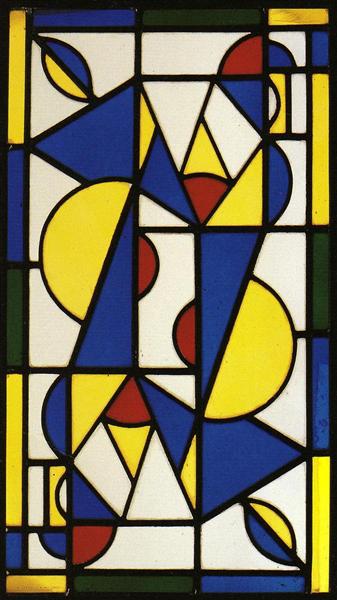Description
The painting "Danza I" (Dance I) by Theo Van Doesburg, created in 1917, is a milestone of the abstract art movement and an emblematic representation of neoplasticism, developed by the artist as an extension of Piet Mondrian's ideas and the movement Of Stijl. The work immerses us in a universe of geometry and color, where the representation of dance is transformed into a visual symphony that reflects both the dynamism of physical movement and the harmony of the abstract order.
Observing "Dance I" is to enter a composition that, although it lacks discernible human figures, evokes a deep sense of movement and rhythm. The work is structured in a network of rectangular shapes and lines, which seem to flow and vibrate, evoking the idea of a dance in which geometric shapes move in a definite space. This use of the two -dimensional plane is characteristic of Van Doesburg, who always sought to explore the interaction of shapes and colors in a limited pictorial space, turning the canvas into a platform for the expression of balance and tension.
The color palette used is vibrant, with a predominance of red, blue and black, contrasting those primary tones with white areas that act as breathing spaces. This color game is interrelated so that each form seems to dialogue with the others, generating a visual choreography where stability and movement coexist. The choice of colors is not random; Van Doesburg used color as a means to transmit emotions and sensations, in this case representing the energy of the dance itself.
The abstract elements of "dance I" have been interpreted as symbols of a life party, a celebration of the movement. Through the dematerialization of the figures in favor of a more essential vision of dance, Van Doesburg manages to capture the essence of dance as a form of human expression that transcends figurative representation. The work is not limited to being a mere illustration of dance, but invites the viewer to participate in the experience of it, only in a more conceptual and less literal level.
The painting is enrolled in a historical context of great artistic and social changes. Just after World War I, "Dance I" can be seen as an answer to the need to rebuild not only society, but also artistic expression. The avant -garde movements, such as Dadaism and constructivism, were in full effervescence, and Van Doesburg positioned itself at the intersection of these currents to explore the use of geometry and color as their own visual language.
In summary, "Danza I" of Theo Van Doesburg is a work that embodies the essence of neoplasticism while exploring the relationship between movement, color and shape. Through its dynamic composition, it manages to transmit not only an image of dance, but also a feeling of celebration and renewal that resonates in modern experience, inviting the viewer to forget their context and immerse himself in a new understanding of art and his function. This work is undoubtedly a testimony of Van Doesburg's talent and a fundamental piece in the development of the abstract art of the twentieth century.
KUADROS ©, a famous paint on your wall.
Hand-made oil painting reproductions, with the quality of professional artists and the distinctive seal of KUADROS ©.
Art reproduction service with satisfaction guarantee. If you are not completely satisfied with the replica of your painting, we refund your money 100%.

